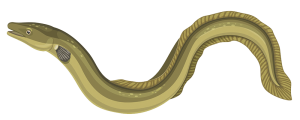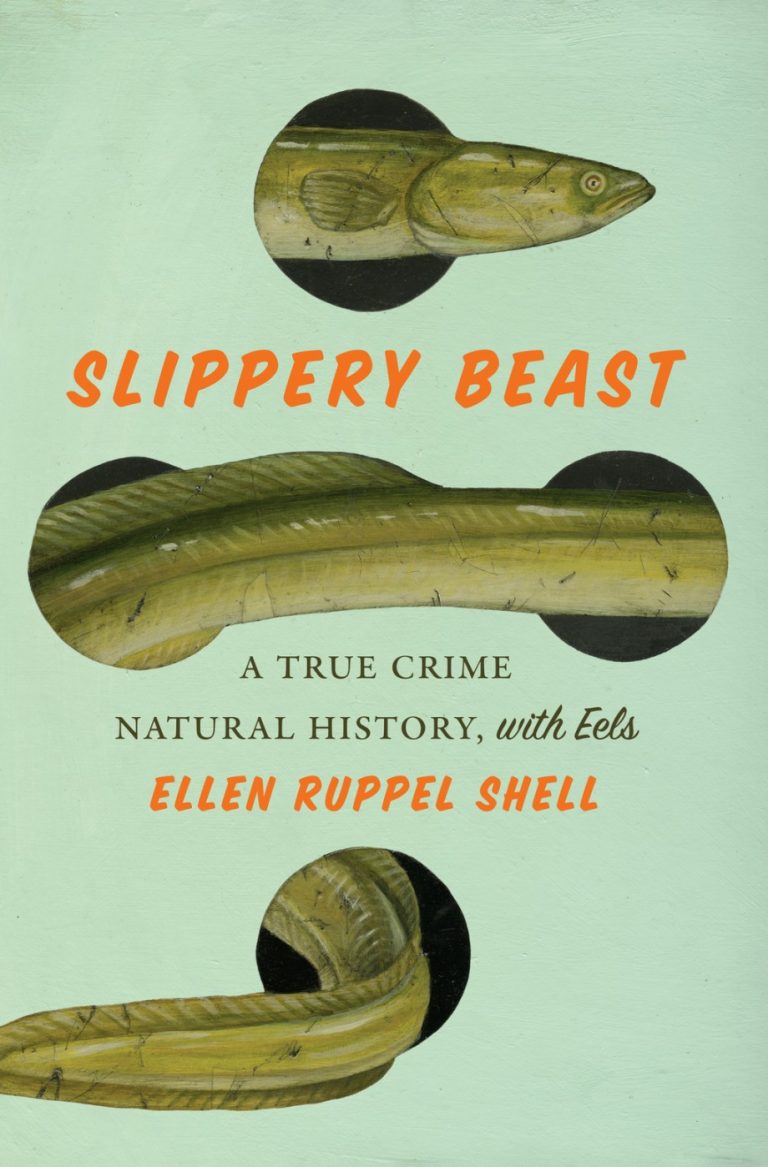The Surprising Eel
What Is It About the Eel?
“Eel people,” as they call themselves, tend to get hooked at an early age, typically while fishing with their fathers. That would not be me. In the whole of my childhood, I can recall casting a fishing rod only once, and promptly embedding the hook in my thigh. So, perhaps like you, I did not grow up fishing eels. I stumbled upon them unexpectedly and with some trepidation. Maybe you too feel some unease? If so, you are in good company. Eels are nature’s Rorschach test; what we think of them reveals not much about them and a lot about us. Mystery? Nuisance? Jackpot? Dinner? Threat? Depending on who you are or who you ask, eels can be all or none of those things. But no matter your feelings about the eel, there’s one thing of which I hope to convince you: no living creature is more remarkable.

Emerging some 200 million years ago from the (figurative) primordial slime, the eel survived a fusillade of calamities culminating 66 million years ago in the Cretaceous–Paleogene extinction that vaporized three out of every four species, including the nonavian dinosaurs. The eel weathered continental shifts and an ice age that paralyzed much of the world. And it colonized six of the seven continents, the sole exception being Antarctica. It is perhaps this traumatic evolutionary history that brought the modern eel its uncanny adaptability. Frozen alive, it finds a way to wait out the thaw. Marooned on land, it finds a way to breathe through its skin. Confronted with an obstacle, it finds a way to surmount it. So durable is the eel, and so willing to adapt, that over time it came to constitute as much as half of the total freshwater fish biomass found in many of the world’s waterways.
It seems almost certain that no other animal is better equipped to survive on this planet. And yet, somehow, we have found ways to imperil it. We’ve shredded it in hydroelectric turbines and blocked its migration path with dams. We’ve poisoned its freshwater habitats, and heated the oceans and disrupted the currents on which its life cycle depends. The coup de grâce? We’ve broiled, grilled, salted, smoked, and jellied it to near oblivion. Since the 1970s, eel numbers have plummeted, with thirteen of all freshwater species classified as “near threatened” or worse. This is especially true of the three commercially vital freshwater species in the northern hemisphere: the Atlantic eels, both the European and the American, and the Japanese eel. Counts of the European eel, Anguilla anguilla, and the Japanese eel, Anguilla japonica, have shrunk by at least 90 percent. Counts of the American eel, Anguilla rostrata, have withered by half, with recruitment in northern regions of its range all but ceased.
To cite one concerning example: the St. Lawrence River and Lake Ontario, once eel havens, are now eel wastelands.
Such devastation comes curtesy of abuses, of course. But it also comes by way of neglect. Americans, for one, have an increasingly complicated relationship with the eel—our growing appreciation of Japanese unagi and other eel-based delicacies has led us to crave it while somehow overlooking its frightening decline. Complicating matters still further is that the eel is one of nature’s most mysterious creatures, harboring secrets that more than a thousand years of human effort have yet to crack. Great thinkers from Aristotle to Freud have labored tirelessly to chart the eel’s life cycle and reproductive habits, as have modern scientists around the globe, to little avail. While it’s thought that all Atlantic eels spawn in the Sargasso Sea south of Bermuda, no one has ever spotted an eel egg in the wild, or, astonishingly, a mature Atlantic eel in the open sea. And since it’s nearly impossible to breed an Atlantic eel in captivity, the only way to grow them is to capture an infant eel and grow it up on a farm—a daunting task now mostly confined to enormous fish farms in China. (The story I tell of America’s first commercially viable eel farm is both hopeful, and cautionary—while one hopes it succeeds, it’s too soon to tell.) So, what is it about the eel that has captivated scientists, philosophers and poets through the ages? Frankly, that’s the question that motivated this book, and one I hope to address in its pages. I do hope you give it a go, and if so, let me know whether you—like me—are now mesmerized by a creature about which you likely never before gave a second thought.

